NYT 5:02 (Amy)
Blindauer untimed (Matt)
LAT 4:21 (Gareth)
CS 8:28 (Ade)
CHE untimed (pannonica)
Do you enjoy themeless crosswords by the younger generation of constructors? Kameron Austin Collins is launching a biweekly subscription deal for themelesses (low-word-count ones). For free! Receive his puzzles via email on the 1st and 15th of the month, beginning next week. Click here to sign up. I’m really looking forward to these puzzles!
Patrick Blindauer’s October website puzzle, “Caesar Salad” — Matt’s review
Patrick has been throwing us relative softballs the past few months, but now he’s back with a 100 mph slider. I didn’t manage to crack the code, so veni and vidi but no vici for me.
19×19 grid with nine entries labeled [Ingredient #1], [Ingredient #2] and so forth. Each answer soon revealed itself to be complete jibberish, such as UROBK UOR for [Ingredient #3] and WYRFNSJQJYYZHJ for [Ingredient #5]. Actually #6 was MOO, but I figured that was a coincidence, and on #5 we got a “___ sauce” hint and on #9 a “___ cheese” nudge. But you get the idea.
It was clear pretty quickly that we were looking at a cryptogram, so I dutifully marked down all nine pieces of ciphertext. Translating them to plaintext wasn’t hard to do, since the canonical ingredients of the title salad are well-known.
But something funny happened on the way to the forum: it emerged that we were dealing with not one cryptogram code, but two or possibly more. Is Patrick this evil, I wondered? He is, it turns out. In full the ingredients in plaintext were 1) CROUTONS, 2) GARLIC, 3) OLIVE OIL, 4) ROMAINE LETTUCE, 5) WORCESTERSHIRE sauce, 6) EGG, 7) LEMON, 8) PEPPER, and 9) PARMESAN cheese.
So Ingredient #8 was VKVVKX, which had to be PEPPER, and Ingredient #3 was UROBK UOR, which was clearly OLIVE OIL. But then I started plunking those letters into the other entries, and just got more jibberish — except in one case, #2, which was MGXROI and had to be garlic. This was the only one of the others that made sense with PEPPER and OLIVE OIL.
Long story short: I started counting whether you went up or down in the alphabet to get from ciphertext to plaintext. So for Ingredient #6, ciphertext MOO, to get to plaintext EGG, you travel 8 letters up the alphabet. For ingredient #7, ciphertext QJRTS, to get to plaintext LEMON, you travel up 5 letters. But then for some of the others you travel down the alphabet. And the only other repeated code was for #1 and #9, which match up like #2, #3 and #8.
You may notice now that the 9-letter phrase ET TU, BRUTE? repeats its letters 1 & 9, as well as 2, 3 and 8, and that Ingredients #4 and #7 also share a code. I cracked and checked the solution, which is very nice: there’s something called a Caesar Shift, which you may know and I wish I had known and am now glad that I do, wherein you simply move each letter down in the alphabet, looping back from Z to A when necessary. Damn! I should’ve thought of that.
The number of spaces you must shift down for each Ingredient is, you guessed it: 5, 20, 20, 21, 2, 18, 21, 20, and 5, whose corresponding letters of the alphabet spell out Caesar’s famed shout to the treacherous Brutus. Making ET TU, BRUTE the answer to the unannounced meta.
This is a complex and lovely creation, and I wish I’d gotten it. When I read the solution I at first wished that Patrick had included meta instructions, but in retrospect I think that would’ve given the game away. “A famous quote” would lead many guessers to the right answer, especially in light of the 9 Ingredients.
Patrick is the only one I know of who creates this sort of “unannounced meta,” and they’re pretty cool. IV.LV stars from me.
David Steinberg’s New York Times crossword—Amy’s write-up
First up, my favorite fill here: GENIUS BAR, HELLION, LASER PEN, CAHOOTS, METH LABS, AIR HOCKEY (man, if the crossword tournament hotel had air hockey tables, I might wind up missing some of the crossword sessions), TRATTORIA, HIP-HOP, SKOR bar (*crunch*), SATSUMA (introduced to me by my puzzly friend Katje … I’d been using the Body Shop’s satsuma-scented soap for years without having any idea satsuma was basically a tangerine), BITCOIN, and LABOR POOL. Oh! And EDH, an [Old English letter].
Toughest crossings:
- Where 35a. [Patriotic org. founded in 1889] meets 29d. [Former cave dweller, informally]. I wanted DAR for 35a, but I’m guessing that was founded much earlier, as this answer is SAR, the Sons of the American Revolution. The “cave dweller” clue was getting me nowhere—it’s OSAMA bin Laden. Would have preferred OBAMA/BAR, but that’s off limits because of GENIUS BAR.
- And also where 43a. [Spray source] meets 44d. [Sharp knocks]. Figured 44d was PINGS, thinking of engine knocks. But UPI? News agencies don’t produce a “spray.” Eventually figured out it was UZI, with a poorly timed spray of bullets, crossing ZINGS.
Five more things:
- 23d. [How some legal rights are made], ON RED. Not wild about the entry, but I like the clue, about legal right turns.
- 1d. [“Lord of the Flies” chief], RALPH. I was reading this clue as if it were about The Lord of the Rings. Same difference.
- 14d. [Like some shady contracts, from an auditor’s standpoint], NO BID. No idea what any of this means.
- 20d. [“Lux-x-xurious!”], OOH LA LA. Has anyone anywhere ever drawn out “luxurious” in such a way that the sound would be represented by a series of X’s?
- It’s one thing to put PLAYBOY MANSION or TOPLESS DANCERS in a puzzle. Putting both of them in just elevates things to the level of grossness.
RATA, SAR, UZI, ASTI, URAL, plural ARGYLES, ENS and CPL, and CD-R join the least favored entry group.
3.9 stars.
Annemarie Brethauer’s Chronicle of Higher Education crossword, “Objective Constantinople” — pannonica’s write-up
Military history oliotheme.
- 33d. [Titular peninsula in a 1981 film about a 1915 military campaign] GALLIPOLI. That makes this year the centenary.
- 19a. [Strait seen from 33 Down] DARDANELLES. Known in the ancient world as the Hellespont.
- 39a. [Commander at 33 Down] ATATURK.
- 57a. [Royal residence that was a workplace for many in the “Vanished Battalion” of the campaign at 33 Down] SANDRINGHAM.
- 11d. [Land referred to by an A in “Anzac”] AUSTRALIA. That’s Australian and New Zealand Army Corps, combatants against the Ottoman Empire at GALLIPOLI. Pretty sure I’ve imparted this recipe before, but if you care to make ANZAC biscuits, here’s how.
Anzac Day is observed on 25 April each year, the date that the campaign was executed, so I don’t know why the crossword is being published now. It was a protracted affair, however, and continued into January of 1916.
 Not part of the theme: 3d [River through Melbourne in 11 Down] YARRA; 68a [Youngster in a Pixar film set partly in 11 Down] NEMO. You all are familiar with my feelings about theme/non-theme intermixing, yes? On the other hand, I’m okay with seeing 31a [Some droning musicians] BAGPIPERS–who are a staple of Anzac Day functions–as there is no explicit connection suggested in the cluing or grid placement.
Not part of the theme: 3d [River through Melbourne in 11 Down] YARRA; 68a [Youngster in a Pixar film set partly in 11 Down] NEMO. You all are familiar with my feelings about theme/non-theme intermixing, yes? On the other hand, I’m okay with seeing 31a [Some droning musicians] BAGPIPERS–who are a staple of Anzac Day functions–as there is no explicit connection suggested in the cluing or grid placement.
- 4d [Inst. that owns “Mountain, Navel, Anchors, Table”] MOMA; 56a [“Mountains, Navel, Anchors, Table” artist] ARP. Unclear to me why this piece was selected here. Though very nice and strikingly modern, it isn’t among his most widely known, nor is it currently on display at the MoMA. Can’t discern any connection to the theme, either. Perhaps it’s a personal favorite of the crossword’s constructor or editor?
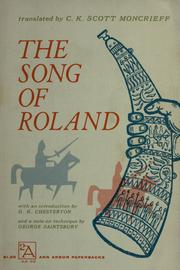 48a [Gas brand extolled in old “Hockey Night in Canada” commercials] ESSO. Not also in current ones?
48a [Gas brand extolled in old “Hockey Night in Canada” commercials] ESSO. Not also in current ones?- Prepositions! 18a [Gives up] RATS ON, 62a [Visit spontaneously] DROP IN, 15d [Clean house] TIDY UP. Not-quites: 52d [Legislative rider, e.g.] ADD-ON, 66a [Emulates Garfield, in a way] OVEREATS.
- Most Higher-Educationy clue and answer: 20d [Veblen’s “The Theory of the __ Class”] LEISURE. That’s Thorsten Veblen, for all you Learned Leaguers. Runner-up: 65a [Hero of an early French Ballad] ROLAND.
- 44a [Harpy] TERMAGANT. Not to be confused with the harpy eagle (Harpia harpyja), or the ptarmigan (Lagopus spp.). TERMAGANT comes from Middle English and dates to at least the 13th century. ‘Ptarmigan’ is adapted from Scottish Gaelic tàrmachan; where the silent P comes from I have no idea.
Lastly, and it’s quite likely I’ve also shared this before—though I have no qualms about doing so again, as it’s so heartrendingly good—from her 1976 solo début album, June Tabor’s a capella version of Eric Bogle’s song recognizing Gallipoli veterans, “And the Band Played Waltzing Matilda”:
Bruce Haight’s LA Times puzzle – Gareth’s review
I immediately saw the notes. It turns out, as the NOTES answer at the bottom explains, that there are starred answers that are the longest one can spell out using A-G. Their placement is irregular, like the rest of the grid. They’re CABBAGE/BAGGAGE/DEFACED/EFFACED/FEEDBAG and ACCEDED. I haven’t checked to see if this is indeed correct. I do not feel that compulsion.
The puzzle has six 7-letter theme answers. Unusually, the grid features a number of answers equal to or longer than these. We have the four longest arranged around the central note: POLICEWOMAN/POPUPADS/BICAMERAL and NATURALIST. They look chosen primarily as grid facilitators rather than seeds. I am amused (or something) at how [Member of the force] pretends that POLICEWOMAN isn’t an unnecessarily gendered term. It’s like how my mother says she saw the “lady vet”.
Among the other medium answers, TAMORA is some deep Shakespeare; GONERIL is more frequently encountered among us hoi polloi though. She’s next to AKIHITO, making for stacked unusual names. I’m not sure a downer answer like APOLLOI is something I’d want in my grid. IPECAC and CASABA are more fun to say. Lastly, I don’t believe ALACKOF is a real answer. It’s a random bit of a sentence masquerading as one; the awkward clue, [Rather little], bears this out.
2.75 Stars
Gareth, leaving you with, not TAMORA, but something close…
Martin Ashwood-Smith’s CrosSynergy/Washington Post crossword, “Hidden Valley”—Ade’s write-up
Happy Friday, everyone! About to leave the Barclays Center after watching the first game of the New York Islanders in Brooklyn. Today’s crossword, brought to us by Mr. Martin Ashwood-Smith, involves four theme answers in which the word “dale” is hidden, spanning both words in the theme answer. The reveal of sorts, DALES, lies right in the middle of the grid (34A: [Low lands]).
- HONDA LEGEND (17A: [Upscale Japanese import])
- RED ALERT (27A: [Danger symbol])
- HARD ALEE (39A: [Skipper’s command])
- TIDAL ENERGY (53A: [Green power source])
Originally had “Jeremiah” instead of NEHEMIAH, and that was the only real hangup that I had during my solve (33D: [Book after Ezra]). Loved most of the fill with the long, down entries, especially BONAPARTE (30D: [The Little Corporal]) and the cluing to RETIREMENT, as that threw me off for a couple of seconds (11D: [It’s no longer working]).
“Sports will make you smarter” moment of the day: CREW (8D: [All aboard?]) – One of the ten charter members of Major League Soccer, Columbus Crew SC is one of the more successful franchises in league history, winning the MLS Cup in 2008 and winning the title for the best regular-season record, the Supporters’ Shield, three times.
Thank you for your time, and I’ll see you tomorrow!
Take care!
Ade/AOK

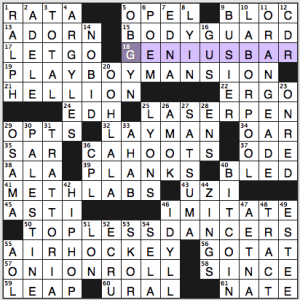
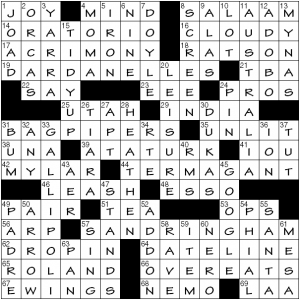
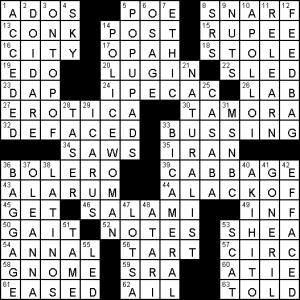
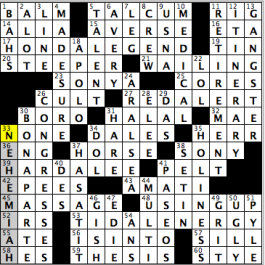
What happened with the changes in the CHE puzzle? What I am asking is how to get it in AcrossLite or even PDF or whatever format but with a grid and numbered clues. Please!!!
Both the direct download link and the link to the web page from the Today’s Puzzles tab work for me.
CHE had a Web site update and the Crosswords page was empty for a few days. It’s been fixed. You can also get it from the cruciverb.com Web site.
Just wanted to share with xworders: For the past week or two I’ve been driving cross country with my wife and dog. Tonight I’m in Ft. Collins, Colorado, about 2000 miles from where we started in Florida. But I just drove past that ancient piece of crosswordese: ESTES park. For the record, it seemed tiny, and the exit had 2 other cities on the sign.
it’s the gateway to rocky mountain national park and gor-ge-ous!
;-)
Thanks! I just looked it up and it does look amazing. I’m here for the weekend so I’ll definitely go!
Many, perhaps most, people assume the DAR predates the SAR, but it was founded in 1890 after the Sons declined to extend membership to women. The Daughters celebrate 125 years this year.
A no-bid contract looks shady because it smacks of a payoff by the giver to the receiver. A recent example was the attempt of newly sworn-in Governor Scott Walker to pass a law that would have allowed him to take over certain utility companies in Wisconsin and turn them over to anyone he chose, no competition. Since his backers the Koch brothers already held about half the utilities in the state, it looked like an attempt to give them the rest cheaply. One of his midnight inspirations, it didn’t survive the light of day.
The CHE was a solid effort, 3.5 stars from me, but one thing that’s always bothered me is defining HEATHEN as a nonbeliever. I’ve seen it also as nonreligious, uncultured, or uncivilized. Polytheist(ic) is closer to the true sense. The derivation shares a root with heath, and the word originally meant a rural person. PAGAN is another word I’ve often seen similarly shaded. Pagan comes from paganus, Latin for rustic. In time, it came to be used pejoratively by the Romans in reference to outlanders who worshiped gods other than the Olympians. Once Catholicism came to be the imperial religion, the Church adopted this term in reference to non-Christians. The implication was that rustic folk were too ignorant to accept this “universal” truth. Neither heathens nor pagans are non-believers; they simply believe in another god or gods than those of the dominant culture. Yes, there is considerable dictionary support for the derogatory usages, and some could argue these are the accepted current meanings, but I would prefer to see this bias cease. Certainly, intelligent people such as those within the crossworld can recognize how it could be offensive to believers in the non-Abrahamic religions.
HERETIC
(Actually, I appreciate your exegesis, as that’s the sort of implied assumption I tend to call out for criticism.)
Oops, I didn’t mean Olympians, who were Greek, of course, though the Romans sometimes acknowledged these, too. Come to think of it, an inclusive term for the Roman pantheon doesn’t come to mind, other than the Latin plural dii for gods. Does anybody know?
Wikipedia knows
Thanks for the link. Dii Consentes seems to be similar to Aesir, denoting the principal gods. So there’s no collective term for all the Roman gods, equivalent to Olympians?
By the way, I’ve been meaning to ask about the derivation of Pannonica. There was a Roman province along the Danube called Pannonia. Does it come from this?
No, it pertains to cast-iron frying pans, singer/actress Anika Noni Rose, and the state of California, where Ms. Rose first studied drama.
Pay no attention to Amy.
Answer: Yes, indirectly. Or at least with some filtration.
Paul, ‘the Olympians’ does not refer to all the Greek gods, but rather to the principal ones descended from the Titans. You might need to figure out precisely what you’re looking for.
I guess what I’m looking for is something meaning all the Roman gods, like “Roman pantheon” only that refers to an actual temple.
But its meaning as ‘all the gods’ predates the name of the building, and is still valid. And there’s a more generic, watered-down sense as well.
When is the Wall Street going back to the normal puzzles? I miss them!
The 21×21s that used to be published on Fridays have been shifted to Saturdays.
RE: NYT 14D shady contracts – Amy, a very recent and close to home example of a NOBID contract is the one signed by the former head of Chicago Public Schools (for which she was indicted yesterday and will plead guilty) with a former employer to provide training for principals. No other contractor bid on the service and Barbara Byrd-Bennett ordered underlings to seek approval for no-bid contracts from the company. In return, Byrd-Bennett got hundreds of thousands of dollars, airfare, baseball tickets, etc., and a promise of a lucrative job post-CPS. BBB unwisely detailed the scheme in emails, even her fondness for casinos. No bid contracts are too often the Chicago & Illinois way of doing business. They are shady from a US Attorney’s standpoint as well as an auditor’s.
Thanks for the explanation of SATSUMA. Every other Saturday my young children and I go to the local Asian market (RANCH MARKET) to buy exotic Oriental food. We have bought most of the fruit on sale (Star fruit, Jackfruit, Rambutan, etc.), but I have never seen Satsuma on sale. The one we have avoided so far is the foul-smelling DURIAN, not because of the foul smell, but because they cost about $30 each and it is not worth that much to experiment. Most of the fruits are pretty bland.
Here is a link to some exotic Asian fruits:
http://list25.com/25-weird-and-exotic-fruits-from-asia-youve-probably-never-heard-of/2/
I thought the section that contained SATSUMA was tricky, but the rest of the puzzle was pretty easy for a Friday.
Steve
I find it strange to think of a satsuma as exotic. (I’ve already said this elsewhere.) It’s one of the more common fruit here, though most people call them naartjies, they’re usually satsumas on the racks.
Amy: I too found Playboy Mansion and pole dancers in the NYTimes to be icky. I just read on Wordplay that David Steinberg was a high school junior when he made the puzzle, so I’m not sure whether to excuse it because of his immaturity (he jokes about it in his comments) or to think it’s even weirder that a teenager would use those as key entries. Sure, he was a kid, but the editor who accepted the puzzle wasn’t.
Hef is in crosswords too often. I think it’s time to retire his fame.
Pan: Thanks for the spot on review of the CHE and the song. My guess it that Arp’s “Mountain, Navel, Anchors, Table” was used for its dada-ish title.
Also in Wordplay, Will Shortz tells us that next week is “New Ideas Week.”
Hef worked so hard to get the “icky” out of the display of the female form. Looks like his efforts fell short. Many have tried to “sanitize” pole dancing, too, but with similar ineffectual results.
Where does all this fit within the sexual revolution? Perhaps time will tell. Weren’t Ruben’s buxom ladies the Playboy Bunnies of his day, albeit without the circulation that Playboy magazine has? Many of the religious paintings and sculpture of antiquity are nothing more than an excuse to exhibit the naked human body. (Think Suzanna and the Elders – even that darling of the Midwest, Thomas Hart Benton succumbed to the lure of this scintillating Biblical tale.) What was going on in the minds of the prehistoric carvers of the Neolithic “Venuses”? Greek and Roman sculpture brought this endless fascination with nudity to its realistic apex and put it on public display.
When will the naked human body stop being thought of as “icky”? (By the way, in modern Western society, male nudity is probably considered even ickier, especially if depicted in a turgid condition.) Ah, it’s the price we pay for civilization, no?
I wish themes like Gallipoli, with its bloody, horrific, murderous history, would evoke such passion as bit of T and A does.
Actually, there are some women who are trying to get pole sports recognized as an Olympic game. It’s quite a different activity than pole dancing, requiring enormous strength and balance.
Yes and no regarding Rubens and the long history of naked women in art. I think it’s more nuanced that what you say. But, just as there is a difference between pole dancing and pole sports, and a difference between Monet’s landscapes and Thomas Kincaid’s, there is a difference between Playboy and other nudes. I don’t object to depictions of the naked body; it’s the underlying attitude toward the people that are depicted that is the problem. From your comments, I’m not sure you see the difference.
Of course I see the differences between a Playmate and other (more respectable? more acceptable?) nudes. It’s the similarities that I was pointing out, which I contend run rampant and run deep.
Mind you, Rubens, et alia, often paid their models, too.
Much of the nuance you allude to is the result of art historians, collectors, curators, critics and Hef, himself, having attributed to them.
To be clear, I’m not commenting on the appropriateness of pole dancing or Hef’s den of iniquities in a puzzle, nor am I specifically criticizing you, Amy. I’m just sayin’…
To me, at least, what’s icky here is not any one entry. What’s most problematic here is that those two entries are connected by little more than “women taking their clothes off for money.” That’s the theme of the puzzle. I would have less of an issue with a minitheme specifically about Playboy, Hugh Hefner, or pole dancing (though I can certainly see any of those having a high “ick” factor for many solvers).
I had read Papa John’s post about Hefner earlier, and now back home again I thought I’d add a few thoughts about him.
The thread has gotten longer in the meantime, and I suppose I’ll start with a couple of notes on later comments: “the underlying attitude toward the people that are depicted that is the problem” [the attitude of whom? and who is to judge? and what exactly is the problem?]; “women taking their clothes off for money” [is the problem that women take their clothes off? why is that a problem? or are you suggesting they should work for free?]. I don’t mean to be snarky, but it seems that there’s an understood assumption that we all know that what Hefner and Playboy does is wrong — or at least, ICKY — and not like the good artists and those other nudes.
I do not agree with that. I don’t want to overstate my defense of Hefner — his work raises some issues — but mostly, overall, it’s okay. And I think the guy deserves some credit.
Perceptions of Hefner have changed over the years. It’s fascinating, I think. Seems some people may think of him as just an old geezer who made a fortune by exploiting women and selling their naked pictures to titilated boys and men — an opportunist of, by, and for the good ol’ patriarchy. I kinda get that. But as PJ noted above, he didn’t invent the idea of naked pictures. He did make them less icky and more respectable. You could even say he was a prude by some standards. You could argue he wasn’t the same as Rubens, sure, but he wasn’t the same as crass pornographers either (and them, depending on the charge, I may defend some other time).
Hefner was at the forefront of a revolution, one that took sex out of the dark and put it in the public square. The freedom espoused during the sexual revolution, a movement not without its faults, was key to re-calibrating roles for men and women in society, and a catalyst for helping to create more opportunity and greater equality for everyone, including women. In the pre-Hefner days, that same sense of heavy-handed morality that thought naked pictures of women were indecent — indeed, ICKY (and then some) — was responsible for a far more restrictive concept of what women could do in society than what we believe today. The walls did need to coming tumbling down. They tumbled, and Hefner deserves some credit there.
Looking at it today, the legacy of Playboy may look like a legacy of exploitation. There is an element of it, no doubt, and the Hefner view doesn’t seem very forward-thinking anymore.
I see Hefner as a man of contradictions. For virtually any revolutionary (Steve Jobs, e.g.), you could probably say the same: someone who brings down the old order and leaves behind a new order with (both new and old) problems left to fix.
The acceptance and appreciation of nudity in society has its ebbs and flows over time. The launching of Playboy marked the beginning of an era that lasted through the Vietnam years and Watergate — nudity wasn’t so icky then, especially for the younger generation. (Notable female icon of the time: Marilyn Monroe.) Things have been moving in the other direction ever since (post-“Star Wars,” if I had to date it) — more conservative politics, more focus on war and competition, more moralistic thinking, etc. (Notable female icon of these times: Ronda Rousey.) To PJ’s point way up top, society today, for a variety of reasons, seems not to like that icky nudity out in the open. (One small data point: people get their heads blown off in PG-13 movies, but nipples get R ratings.) The evolving role of women is a big factor, and a positive change, and with more power women are better able to fight back against exploitation. That’s all good. But not everything then was exploitation; see baby, bathwater.
Back to crosswords: HEF does appear in a lot of them, thanks in large part to his three-letter nickname. But, like it or not, he’s an important cultural figure, still with us, and there’s no reason to retire his name. (I think Robert E. LEE has fewer redeeming qualities, and we see him all the time.)
The LA Times today was a fun solve. The theme was very satisfying once everything fell into place. I initially thought it had something to do with consecutive duplicated letters (e.g. ee, ff, gg, etc.) and was pleasantly surprised to be proven wrong.
Thanks Amy!
LAT: How do we feel about DEFACED / EFFACED?
They’re part of a set so I think it’s okay.
LAT: I take offense at Gareth’s comment that my puzzle’s theme answers and grid art are “irregular”. The six theme answers are perfectly symmetric, and the NOTES have what Jim Horne called “goldfish symmetry” in his NYT blogpost of 8/8/14. I think grid art should be pleasing to the eye, but should not be a slave to “normal crossword symmetry”. I’ll admit that DEFACED/EFFACED and FEEDBAG/BAGGAGE are annoyingly similar, and A LACK OF was born due to… a lack of…. better options – that southeast corner was tough to fill !
agreed!
As an addendum to the LAT and “policewoman,” that stopped in the early 1970’s, due to a lawsuit filed against the City of L.A. From that point on, they were “police officers.”
Great puzzle, Bruce!!!!
Thanks Harry! – your comments are duly NOTED, and appreciated!
Terrific NYT puzzle! I know Satsuma as a type of pottery. I have a small collection of Satsuma buttons, once made in Japan to sell to visitors, as the Japanese didn’t use buttons in their clothing. They are quite pretty.